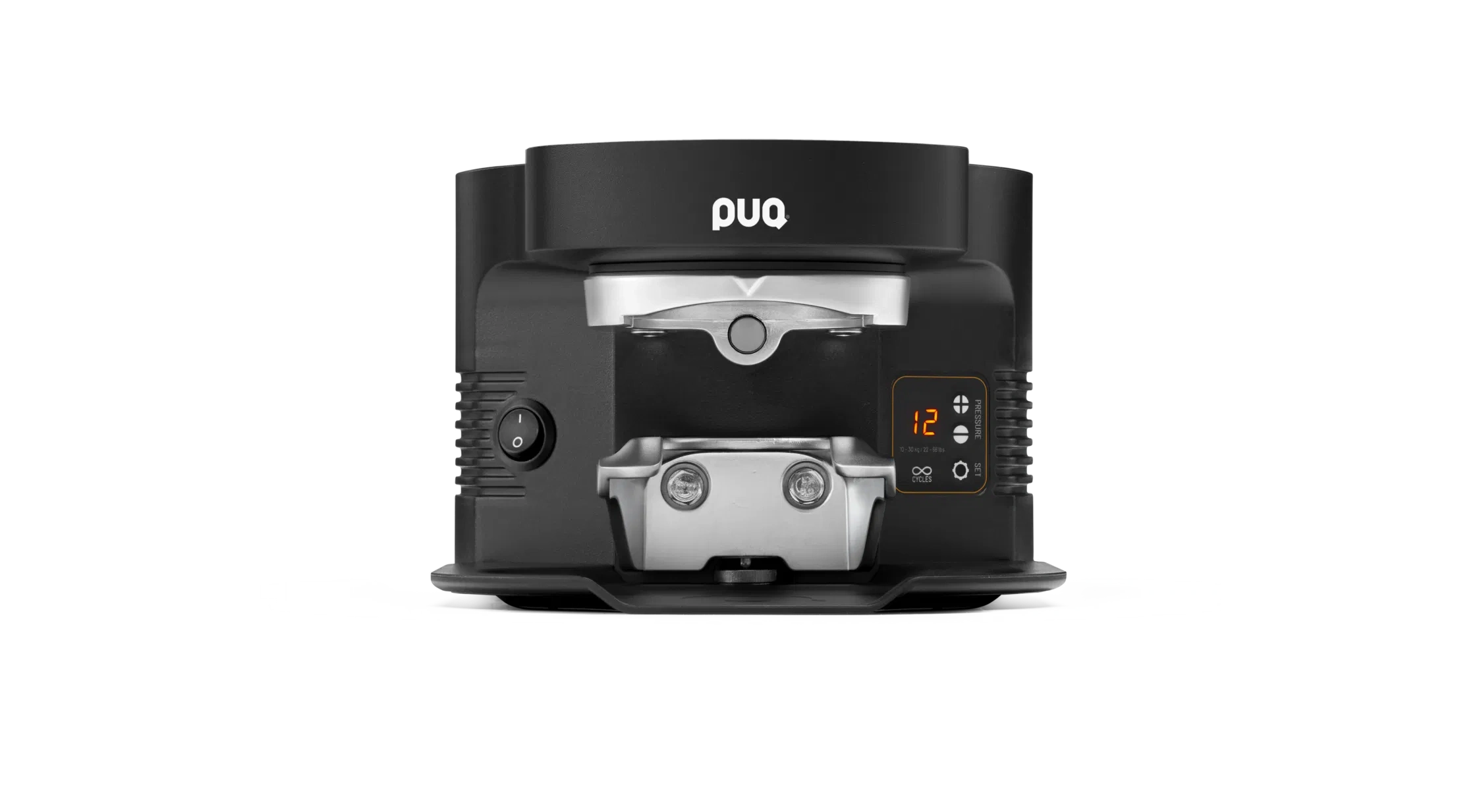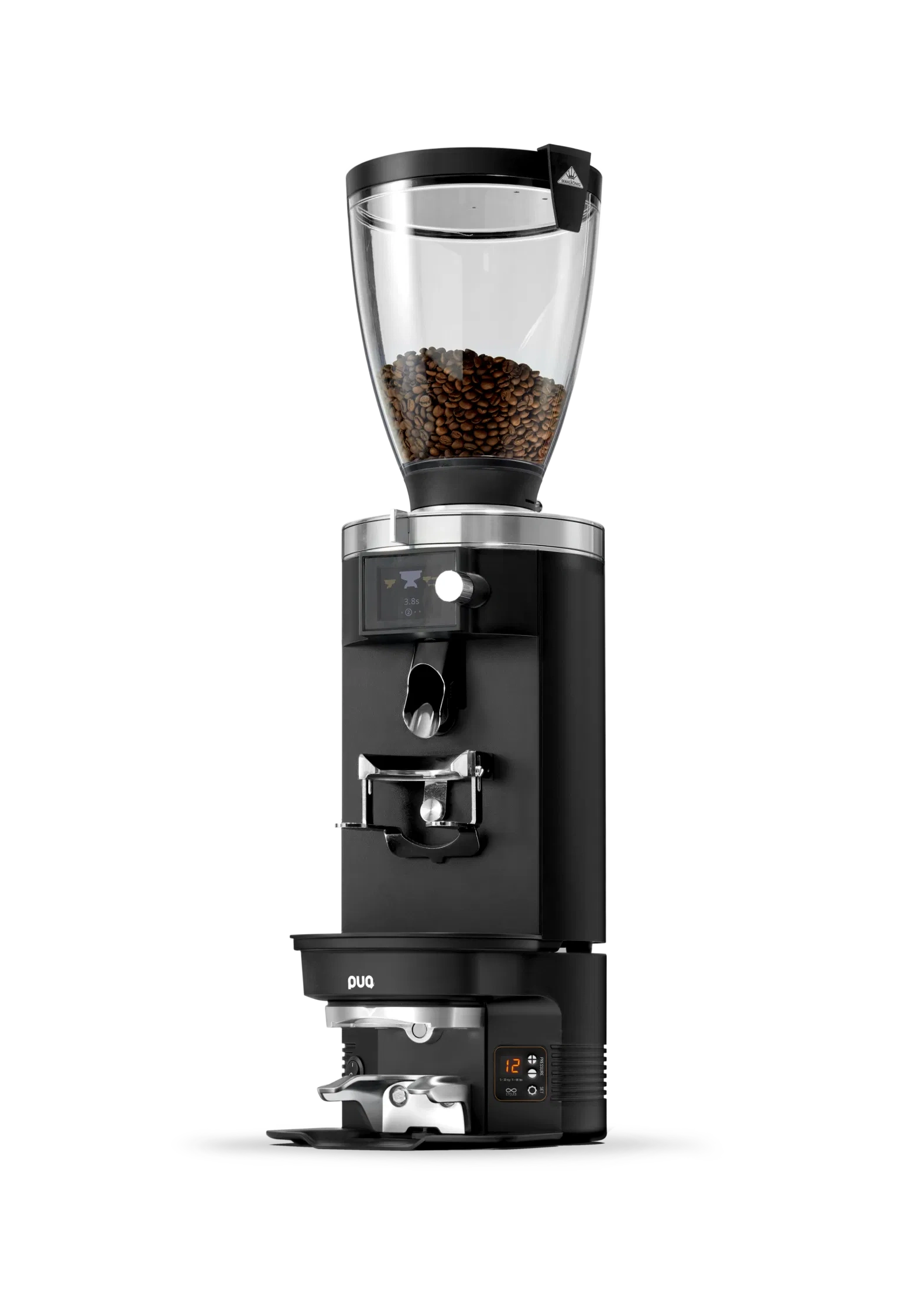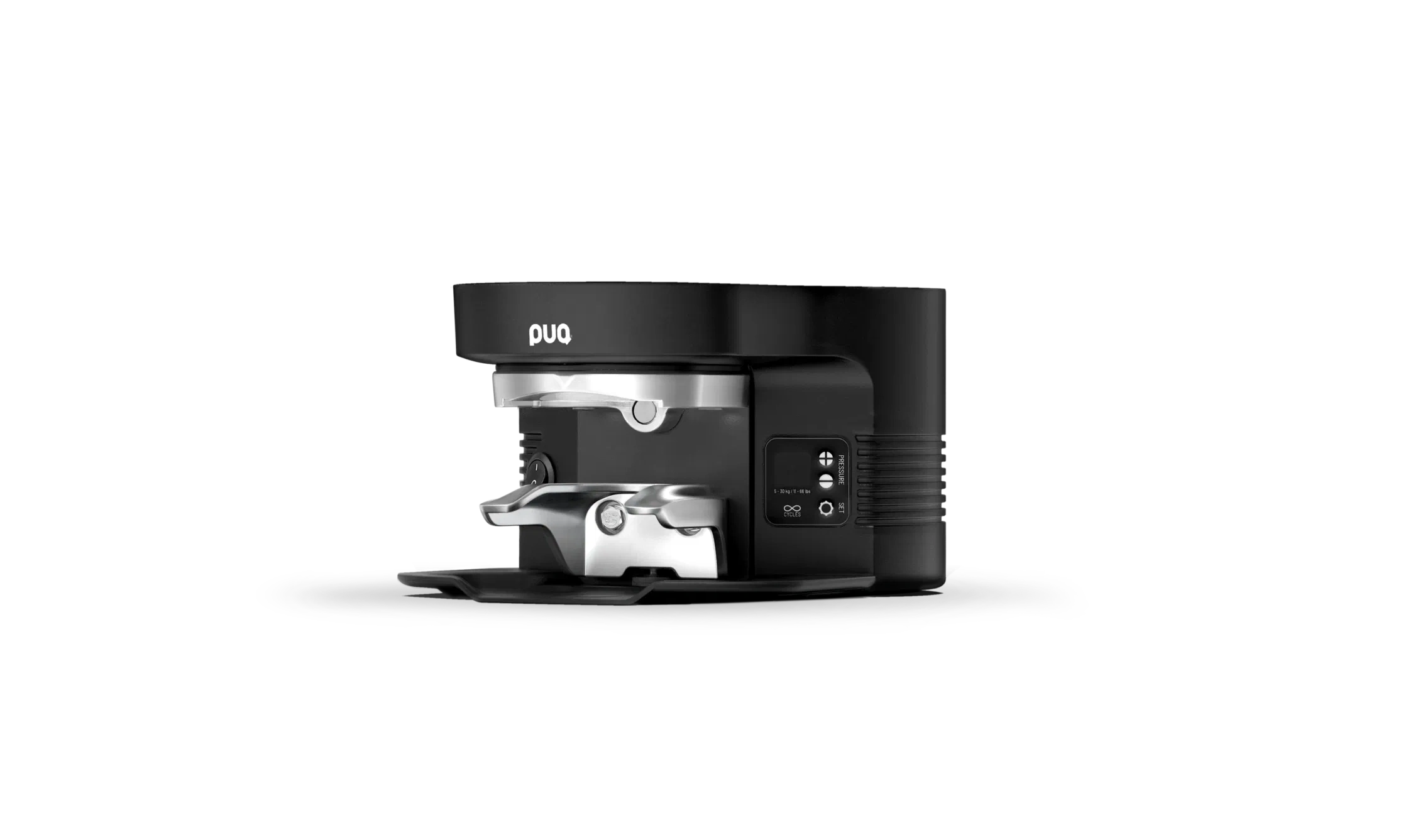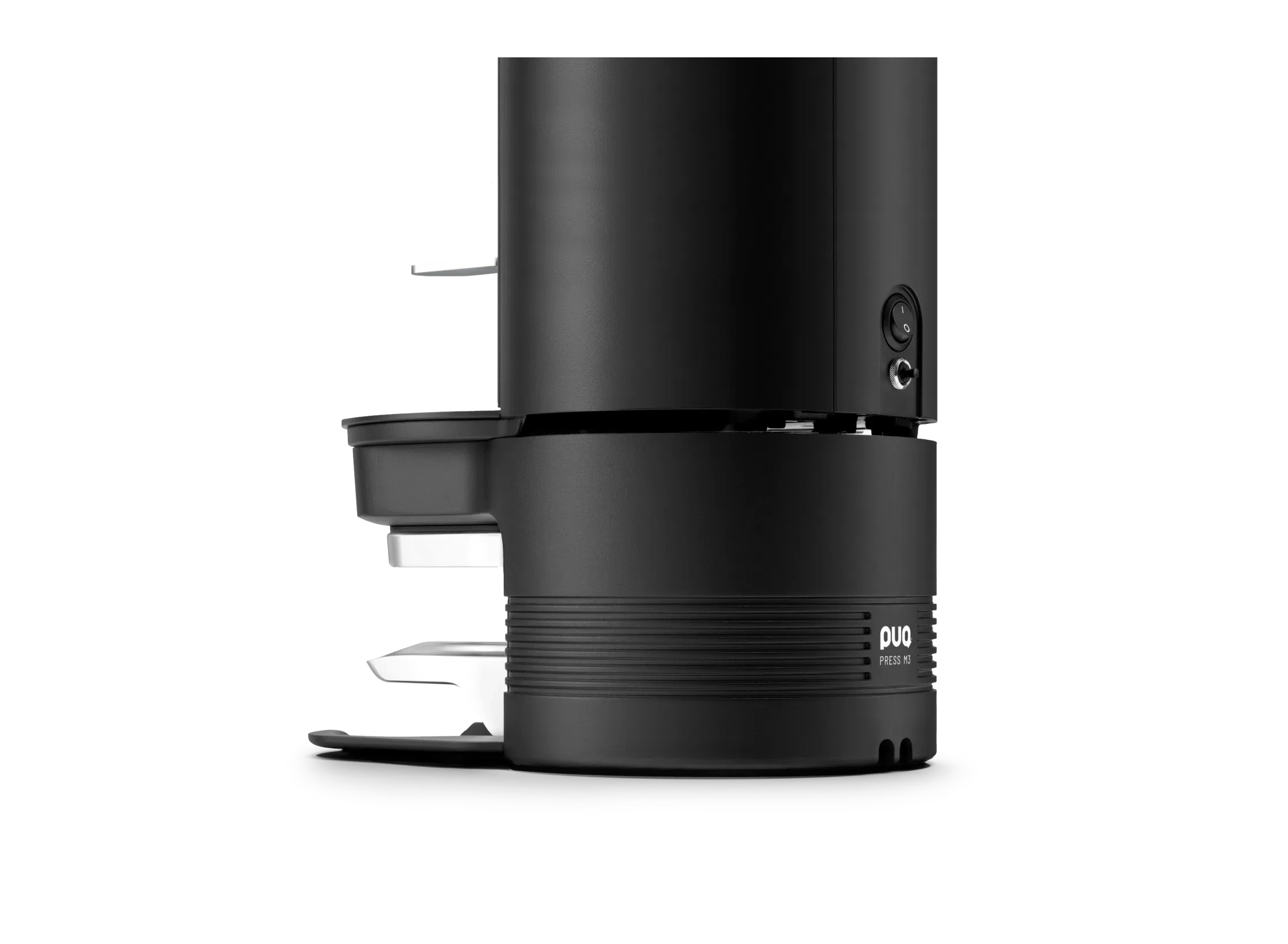





PUQ Press M3 - Integrated tamper for Mahlkönig E65S & E65S GBW
inclusa l'imposta sul valore aggiunto
Finanzieren ab 44,62 € / Monat* mit
🚚 Shipping within EU: 8 €
EU shipping costs, see shipping policy.
Passt wunderbar dazu

PUQ Press M3 - Integrated tamper for Mahlkönig E65S & E65S GBW
PUQ Press M3 - Integrated tamper for Mahlkönig E65S & E65S GBW
The PUQ Press M3 is the customized, integrated tamper for the Mahlkönig E65S and E65S GBW. It ensures perfect, repeatable tamping results, optimizes the workflow and saves valuable work surface space. Designed for medium to high coffee throughput environments, it blends seamlessly with the grinder - for ergonomic, efficient work at the bar.
Seamless integration into your setup
The M3 has been precisely matched to the grinders in the Mahlkönig E65 series and replaces the standard grinder base. The result: more space, more efficiency and more consistency with every espresso. Thanks to the plug-and-grind design, the unit is easy to install and can be connected directly to the grinder - without additional equipment or complicated settings.
Maximum precision and durability
The PUQ Press M3 is built for heavy-duty use - day after day, shot after shot. With a pressure range of 5 to 30 kg in 1 kg increments, five tamping profiles (Speedy, Precision, Hulk, Soft, Single) and a robust metal housing, it delivers consistent results - even in the most hectic phases. So the quality of your espresso always remains at the top level, regardless of the barista.
Expandable & future-proof
With the optional universal bracket, the M3 can also be combined with other grinders. This offers maximum flexibility as your setup grows or you want to integrate new devices - without compromising on precision or workflow.
Advantages at a glance
- Integrated tamper: Developed for Mahlkönig E65S & E65S GBW
- Seamless integration: Mounted under the grinder to save space
- Perfect repeatability: Constant pressure between 5 and 30 kg
- Highest processing quality: For thousands of tamps per week
- Ergonomic & efficient: No repositioning, no effort required
- Expandable: Compatible with optional universal bracket
Technical specifications
| Feature | PUQ Press M3 |
|---|---|
| Compatibility | Mahlkönig E65S & E65S GBW |
| Coffee capacity | Over 10 kg per week |
| Tamping pressure | 5 - 30 kg (in 1 kg increments) |
| Tamping profiles | Speedy / Precision / Hulk / Soft / Single |
| Profile switch | No |
| Tamp diameter | 53 - 58.3 mm |
| Dimensions (W × D × H) | 28.3 × 19.4 × 14.7 cm |
| weight | 4.6 kg |
| Power consumption | 76 W | 110-240 V | 50-60 Hz |
| Guarantee | 2 years / unlimited tamps |
Conclusion
The PUQ Press M3 is the perfect addition for anyone working with the Mahlkönig E65 series. It automates the tamping process directly at the grinder, speeds up the workflow and guarantees consistent precision - even at high throughput rates. PUQ Press M3 - for baristas who combine efficiency and perfection.
Dettagli del produttore
* Bonität vorausgesetzt. Ratenbeispiel für PayPal Ratenzahlung: effektiver Jahreszins 12,49 % p.a., fester Sollzinssatz 11,80 % p.a., Laufzeit 24 Monate. Genaue Konditionen und Gesamtkosten werden im nächsten Schritt von PayPal angezeigt. Angebot gültig nur für Kunden mit Wohnsitz in Deutschland. Weitere Infos zur Bonitätsprüfung.
If you have any questions, please feel free to contact us at any time. We will get back to you as soon as possible, within 24 hours on weekdays.
-
Shipping info
We ship all products the same day if ordered before 1pm.
-
Supporto
We will also be there to support you and advise you after your purchase. If you have any questions about the product you purchased from us, please contact us.
-
Contact
Email: hello@naturbohne.de
Telefono: 07454 / 870 48 64
Frequently Asked Questions
I bought a new coffee grinder from Naturbohne and there are coffee residues in it.
Please note: Some manufacturers test their coffee grinders before shipping, which means that small coffee residues or bean residues can occasionally be found in the grinder. This procedure is used to test functionality and is considered a quality feature. Of course, we only sell new products - unless expressly stated otherwise.
Static charge – coffee grounds spray out from the side
With some coffee grinders, the ground coffee can become statically charged and spray out of the portafilter at the side. This means that not all of the ground coffee gets into the portafilter, which can lead to uneven extraction. Our recommendation: Use a dosing funnel to ensure that all of the ground coffee is precisely fed into the portafilter - for optimal espresso enjoyment.
What is dead space in coffee grinders?
Conventional coffee grinders often leave a so-called dead space in which coffee residues accumulate. These residues can not only affect the freshness, but also lead to old and fresh coffee grounds being mixed, which negatively affects the taste. In contrast, single dose grinders have a well-thought-out design that eliminates the dead space. Each portion is ground individually and precisely so that no residues are left behind - for a consistently pure and full-bodied coffee experience.
Which portafilter fits my espresso machine?
When choosing the right portafilter for your portafilter machine, it is important to know that each manufacturer develops its own brewing group - the most well-known is the Faema E61. However, this does not mean that any portafilter will fit without any problems. An incompatible portafilter can leak, which will have a direct negative impact on the quality of your espresso. We therefore recommend using either the portafilter originally supplied or one that is explicitly stated to be compatible with your machine. This will ensure that the pressure is optimally built up and the espresso is perfectly extracted.
Can I visit you or pick up the goods personally?
Yes, of course, you are welcome to come by and look at our products by appointment. We would be happy to advise you personally. The best thing to do is to send us an email with a few suggested appointment times.
We are located 5 minutes from the motorway between Stuttgart and Lake Constance on the edge of the Black Forest.
Important note, first use coffee grinders
Another little tip for the perfect start with your new mill:
You will get the best grinding result after you have ground about 1-2 kg of beans. It is best to use a few cheap beans so that the grinder can work optimally. And if you are wondering what you can do with the bean flour - it is perfect plant fertilizer! 🌿
It contains nitrogen, potassium, sulfur and phosphorus and is a real nutrient bomb for your plants.
Potete effettuare una calibrazione offset sulla mia macchina portafiltro?
Esistono alcuni argomenti contro la calibrazione offset per le macchine portafiltro Lelit, in particolare per i modelli come la Lelit Bianca. Questi argomenti riguardano principalmente la complessità e i limiti dell'offset come unica soluzione ai problemi di temperatura:
- fluttuazioni di temperatura e instabilità. L'offset tiene conto di una differenza costante tra la temperatura della caldaia e la temperatura di erogazione. Nella pratica, tuttavia, possono verificarsi fluttuazioni di temperatura, ad esempio a causa di tempi di sosta più lunghi o di una fermentazione continua. Di conseguenza, non è sempre possibile prevedere con precisione la temperatura effettiva della birra.
- Dipendenza dalle condizioni ambientali. Fattori come la temperatura ambiente, l'umidità e le condizioni della macchina (ad esempio, il tempo di riscaldamento) hanno un'influenza significativa sulla temperatura di fermentazione. Un offset fisso non può compensare dinamicamente queste variabili, il che può portare a risultati imprecisi.
- Perdita di calore durante le pause. Dopo le pause più lunghe, il gruppo di infusione si raffredda e la macchina ha bisogno di tempo per tornare alla temperatura desiderata. Un offset correttamente impostato non è in grado di compensare questo fenomeno, per cui sono necessarie misure aggiuntive come un "lavaggio di raffreddamento".
- Calibrazioni di fabbrica errate. Su alcuni modelli Lelit, è stato riscontrato che l'offset di fabbrica è spesso impostato in modo impreciso (ad esempio, 4-8 gradi troppo bassi su Lelit Bianca). Ciò richiede una ricalibrazione manuale da parte di personale specializzato, che può risultare complicata per gli utenti finali.
- Fraintendimenti nell'applicazione. Molti utenti sono confusi da informazioni contraddittorie sull'impostazione dell'offset, che possono portare a regolazioni errate. Ad esempio, spesso si pensa che l'offset da solo risolva tutti i problemi di temperatura, mentre è solo una parte di un sistema più complesso.
Conclusione
La calibrazione dell'offset è uno strumento utile, ma non deve essere considerata in modo isolato. Per ottenere risultati ottimali è necessaria una combinazione di controllo PID preciso, manutenzione regolare e tecniche personalizzate (ad esempio, colpi di risciacquo).
Do you have any more questions?
Contact
If you have any questions about our products, please write to us here or use the chat function.